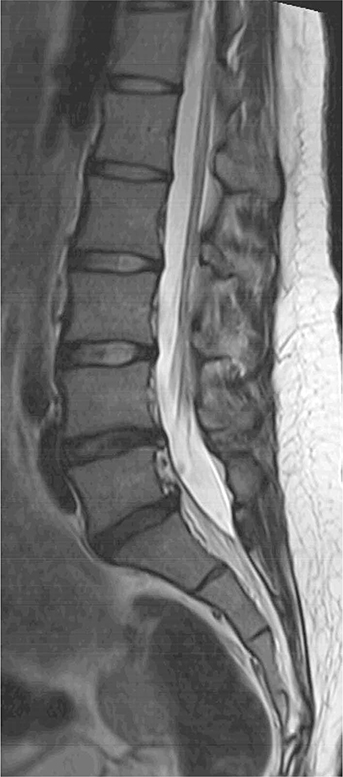Investig Magn Reson Imaging.
2019 Jun;23(2):142-147. 10.13104/imri.2019.23.2.142.
Accessory Belly of the Piriformis Muscle as a Cause of Piriformis Syndrome: a Case Report with Magnetic Resonance Imaging and Magnetic Resonance Neurography Imaging Findings
- Affiliations
-
- 1Department of Radiology, Kangbuk Samsung Hospital, Sungkyunkwan University School of Medicine, Seoul, Korea. capella27@gmail.com
- 2Department of Physical & Rehabilitation Medicine, Kangbuk Samsung Hospital, Sungkyunkwan University School of Medicine, Seoul, Korea.
- KMID: 2452528
- DOI: http://doi.org/10.13104/imri.2019.23.2.142
Abstract
- Piriformis syndrome caused by an accessory belly of the piriformis muscle is very rare. Only a few cases have been reported. Here, we report a case of piriformis syndrome resulting from an extremely rare type of accessory belly of the piriformis muscle originated at the proximal third portion of the main piriformis muscle and attached separately to the greater trochanter inferior to the insertion of the main piriformis muscle. A definitive diagnosis of piriformis syndrome was made based on magnetic resonance imaging and magnetic resonance neurography findings that were consistent with results of nerve conduction study and needle electromyography.
Keyword
MeSH Terms
Figure
Reference
-
1. Lee EY, Margherita AJ, Gierada DS, Narra VR. MRI of piriformis syndrome. AJR Am J Roentgenol. 2004; 183:63–64.
Article2. Petchprapa CN, Rosenberg ZS, Sconfienza LM, Cavalcanti CF, Vieira RL, Zember JS. MR imaging of entrapment neuropathies of the lower extremity. Part 1. The pelvis and hip. Radiographics. 2010; 30:983–100.3. Beaton LE, Anson BJ. The relation of the sciatic nerve and its subdivisions to the piriformis muscle. Anat Rec. 1937; 70:1–5.4. Sen A, Rajesh S. Accessory piriformis muscle: an easily identifiable cause of piriformis syndrome on magnetic resonance imaging. Neurol India. 2011; 59:769–771.
Article5. Yadav Y, Mehta V, Roy S, Suri R, Rath G. Superior gluteal nerve entrapment between two bellies of piriformis muscle. IJAV. 2010; 3:203–204.6. Polesello GC, Queiroz MC, Linhares JPT, Amaral DT, Ono NK. Anatomical variation of piriformis muscle as a cause of deep gluteal pain: diagnosis using MR neurography and treatment. Rev Bras Ortop. 2013; 48:114–117.
Article7. Ravindranath Y, Manjunath KY, Ravindranath R. Accessory origin of the piriformis muscle. Singapore Med J. 2008; 49:e217–e218.8. Natsis K, Totlis T, Konstantinidis GA, Paraskevas G, Piagkou M, Koebke J. Anatomical variations between the sciatic nerve and the piriformis muscle: a contribution to surgical anatomy in piriformis syndrome. Surg Radiol Anat. 2014; 36:273–280.
Article9. Yeoman W. The relation of arthritis of the sacro-iliac joint to sciatica, with an analysis of 100 cases. Lancet. 1928; 2:1119–1122.
Article
- Full Text Links
- Actions
-
Cited
- CITED
-
- Close
- Share
- Similar articles
-
- Post-radiation Piriformis Syndrome in a Cervical Cancer Patient: A Case Report
- Leg Weakness Caused by Bilateral Piriformis Syndrome: A Case Report
- Piriformis Syndrome (Sciatic Nerve Entrapment) Associated With Type C Sciatic Nerve Variation: A Report of Two Cases and Literature Review
- Gait Improvement after Botulinum Toxin Injection in a Patient with Piriformis Muscle Syndrome
- Looking beyond Piriformis Syndrome: Is It Really the Piriformis?




